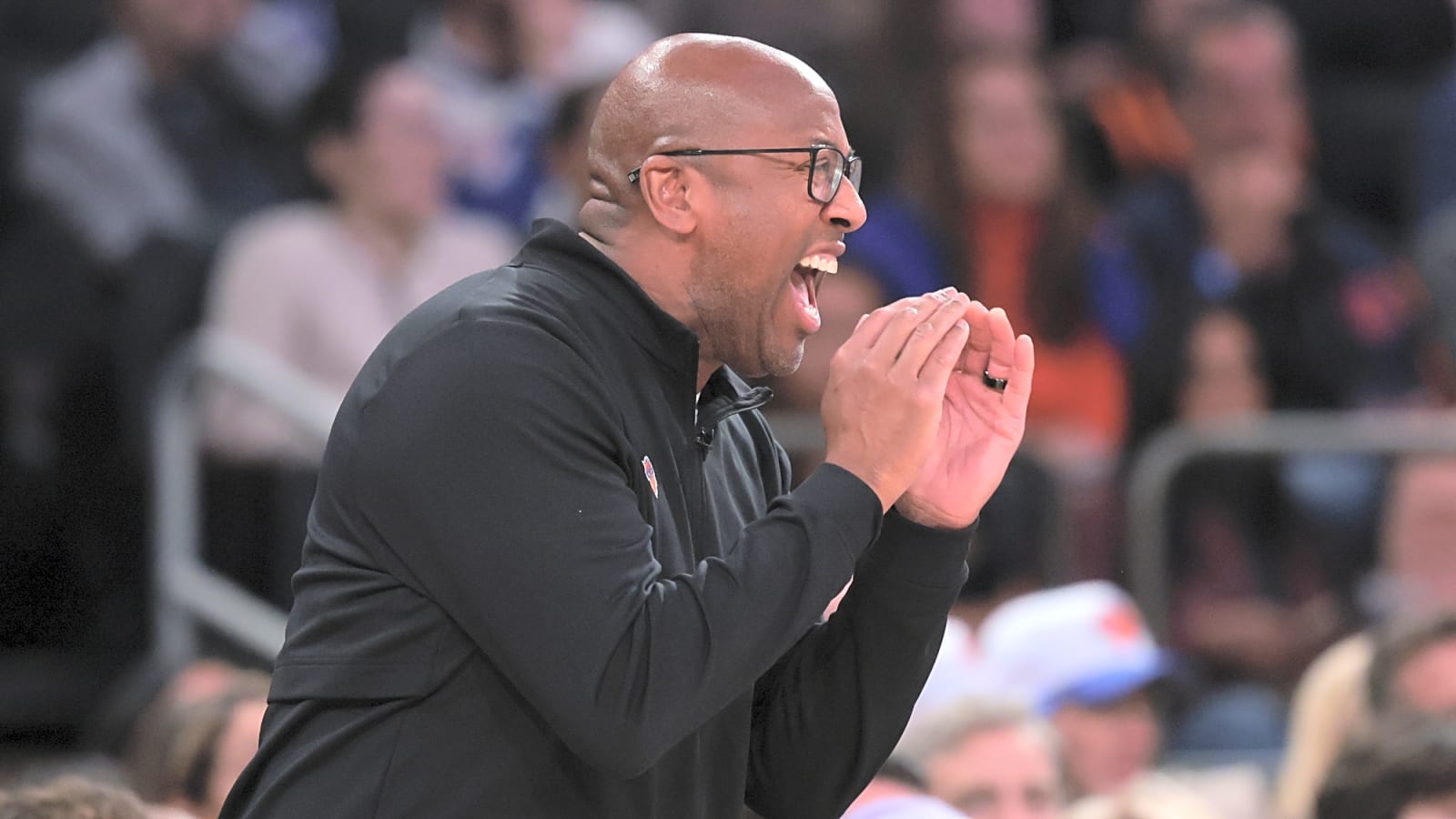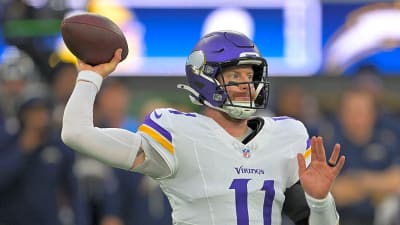
The New York Knicks moved to 2-0 with their 105-95 win over the Boston Celtics at Madison Square Garden.
It was a mostly comfortable win for the Knicks, who seized the lead midway through the second quarter and never allowed Boston to get closer than nine points during the second half. In many areas, the Knicks continued building on the championship habits they established in the opener.
However, the Knicks also revealed some growing pains as they adapt to a new system and play style under head coach Mike Brown. The second half was a sloppy effort for New York, as they were outscored 41-51 after a dominant second quarter (42-14).
Let’s break down some of the main takeaways, both positive and negative, from the Knicks’ latest victory.
Love: Green light from deep
From watching the Knicks’ approach to shooting the basketball, you can tell that Brown has given a perpetual green light to the entire roster. Anytime a player is squared up to the hoop and has space, they let it fly with confidence, not hesitating for a split second. That goes from the stars all the way down to the last man off the bench.
This newfound mentality is leading to the uptick in three-point attempts that Brown wanted. New York made 17-of-45 treys (37.8%) against Boston after shooting 40 of them in the opener. It’s extremely early, but the Knicks are averaging 42.5 three-point attempts per game, which would have trailed only Boston last season. This is up from 34.1, which ranked 27th.
The increase in attempts has primarily come from New York’s top shooters. Last year’s Knicks team already had good depth in the shooting department (eight players shot over 150 threes, which is equal to the league-average number of players to take that many), but New York’s lack of total attempts occurred because their leaders in attempts shot fewer threes than the team leaders on almost every other team.
Last season, OG Anunoby led the Knicks with 6.2 three-point attempts per game, which ranked 35th in the NBA. Through two games, they currently have three players comfortably above that mark: Miles McBride (7.5), Anunoby (8.0), and Jalen Brunson (8.0).
That trio is averaging 23.5 treys per game, up from 17.2 last year. That’s an increase of 6.3, which is responsible for most of New York’s team-wide jump of 8.4 (34.1 to 42.5).
Against the Celtics, McBride (2 for 9), Brunson (3 for 7), and Anunoby (2 for 7) combined to make 7-of-23 threes (30.4%). The percentage will get better, and when it does, the Knicks will reap the rewards of having three talented shooters getting that many attempts up.
Love: Offensive rebounding
Offensive rebounding was the hallmark of Tom Thibodeau’s Knicks offense. Across the past three seasons, New York had the second-highest offensive rebounding percentage in the NBA (27.9%), trailing only Houston (29%).
With the Knicks aiming to become more of a fast-paced, outside-shooting team under Brown, it is fair to wonder if they can retain their knack for crashing the offensive glass. Against Boston, though, they showed the best of Thibs’ and Brown’s worlds.
Even while attempting 45 threes, the Knicks racked up 21 offensive rebounds. Their offensive rebounding percentage was an absurd 42%. Josh Hart looked like a madman in his debut, racking up six offensive rebounds (and 14 total rebounds) in just 19 minutes off the bench. Karl-Anthony Towns had six offensive boards of his own, while Guerschon Yabusele added three in 13 minutes.
Typically, shooting more threes should lead to fewer offensive rebounds, as missed threes are less likely to be recovered by the offense than missed twos. Last year, among the top 10 teams in three-point attempt rate, only two also ranked in the top 10 of offensive rebounding percentage (Golden State and Utah).
It’s way too early to say that the Knicks will be able to buck these trends over 82 games and the playoffs, but they’ve done it through two games. New York has the third-highest three-point attempt rate (.494) and the fourth-highest offensive rebounding percentage (34.5%).
They’re obviously not going to get 34.5% of available offensive boards all year, but if the Knicks are even just an above-average offensive rebounding team while shooting that many threes, their offense will be incredibly hard to stop.
The concern: Turnovers
The Celtics held the Knicks to just 41 second-half points. Turnovers were the primary problem, as New York had 12 in the second half.
Tyler Kolek and Karl-Anthony Towns were the main culprits, coughing up three second-half turnovers apiece, but it was a team-wide epidemic, as seven different Knicks turned the ball over after halftime. New York’s passing was entirely out of whack, as the team had seven assists to 12 turnovers.
Boston’s defense clamped down after the break, turning up its full-court pressure and blitzes. The Knicks struggled to respond. It felt like the team was enduring the growing pains of adapting to a wildly different offensive philosophy under Brown.
Under Thibodeau, the Knicks may have responded to amplified pressure by putting the ball in Jalen Brunson’s hands and slowing up the pace to control the game flow. They would rely on isolations or pick-and-rolls to minimize the odds of a turnover and ensure one of their best players got a good shot up.
But under Brown, the Knicks want to keep the ball moving and the threes flying no matter what the defense throws at them. That means their passing and execution will have to be razor-sharp when defenses start clamping down the way Boston did.
It’s a brand-new play style for any returning members of the team, and they seemed to be working out the kinks on Friday night. This should be a positive learning experience, as they will have plenty to unpack when they watch the tape on their flight to Miami.
More must-reads:
- Hornets' Kon Knueppel makes NBA history in blowout loss to Heat
- Nuggets star Jamal Murray promises help for Jamaica after Hurricane Melissa
- The 'Most 2,000-point NBA seasons' quiz
Breaking News
Trending News
Customize Your Newsletter
 +
+
Get the latest news and rumors, customized to your favorite sports and teams. Emailed daily. Always free!








